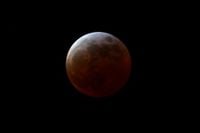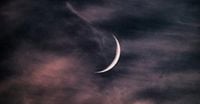As summer winds down and autumn edges closer, skywatchers across Ohio and much of North America are gearing up for a celestial spectacle: the September full moon, also known as the corn moon. This annual event isn’t just another date on the lunar calendar—it’s steeped in history, tradition, and a bit of astronomical magic that continues to captivate both seasoned astronomers and casual stargazers alike.
According to Space.com, the corn moon will reach its peak illumination on Sunday, September 7, 2025, at precisely 2:09 p.m. ET. While that moment occurs during daylight hours, the nights surrounding this date will offer the best opportunities to catch the moon in all its glory as it rises above the horizon, bathing fields and city streets in a soft, silvery light.
The name "corn moon" has deep roots in Native American traditions. As detailed by the Old Farmer’s Almanac, the full moon in September earned this moniker because it coincided with the corn harvest in the northern United States. For many Indigenous communities, the lunar cycle served as an agricultural calendar, and the bright September moon marked a crucial time to gather crops before the chill of autumn set in. Some tribes even extended the corn moon name to the August full moon, depending on local harvest times and traditions.
This year, the lunar calendar is packed with excitement. There are four full moons left in 2025, and three of them will be supermoons—a term that describes a full moon occurring when the moon is at or near its closest point to Earth in its orbit. These supermoons appear larger and brighter than usual, though the September corn moon itself is not classified as a supermoon this time around. Still, its beauty and significance remain undiminished.
Right now, as of August 25, 2025, the moon is in its waxing crescent phase, shining at just 5-6% illumination. This phase, which follows the new moon, is a favorite among skywatchers. According to Moongiant and Time and Date, the waxing crescent represents the moon’s first visible sliver after its monthly disappearance. The phase stretches from 0% to 50% illumination, gradually revealing more of the lunar surface each night. For those eager to catch a glimpse, the waxing crescent is visible in the western sky just after sunset, offering a subtle but enchanting preview of what’s to come.
On August 26, 2025, there’s a special treat for those with a clear view of the western horizon. As reported by Space.com, the waxing crescent moon—at 11% illumination—will appear less than six degrees to the lower left of Mars, which itself will be less than ten degrees above the horizon at sunset. The moon and Mars will be nestled among the stars of the constellation Virgo, with Spica, Virgo’s brightest star, glimmering to the upper left of the moon. For a sense of scale, the width of your clenched fist at arm’s length covers about ten degrees of sky, making this a compact and visually striking conjunction.
Through a pair of 10x50 binoculars, observers can spot distinctive features on the moon’s surface, such as Mare Crisium (the Sea of Crises) and the eastern edge of Mare Fecunditatis (the Sea of Fertility). These ancient lava plains appear as dark ovals, adding texture and intrigue to the lunar landscape. By the following night, the moon will have moved past Mars and Spica, setting course for a rendezvous with the red supergiant star Antares in the constellation Scorpius—just before the first quarter phase on August 31.
For those interested in the moon’s ongoing journey, the lunar phases for late August and September 2025 are as follows: first quarter on August 31, full moon (corn moon) on September 7, last quarter on September 14, and new moon on September 21. Each phase offers its own viewing opportunities and symbolic meanings, with the waxing crescent in particular representing new beginnings, hope, and potential. According to AstroSeek, the waxing crescent moon in Virgo is said to inspire feelings of order, clarity, and a drive to organize both thoughts and surroundings. While astrology isn’t everyone’s cup of tea, it’s hard to deny the sense of renewal that comes with watching the moon grow night by night.
But the lunar drama doesn’t end with the corn moon. The October full moon, known as the hunter’s moon, will peak on October 6, 2025, marking another chapter in the moon’s seasonal story. And for those who crave even more spectacle, there’s the phenomenon known as the blood moon. As explained by cleveland.com, a blood moon occurs during a total lunar eclipse, when the Earth passes directly between the sun and the moon, casting a shadow that turns the moon a deep, reddish hue. While the September 2025 full moon is not a blood moon, these events are always highly anticipated, drawing crowds and sparking fascination with the science behind the color change.
Of course, seeing the moon in all its phases is easier with the right equipment. Space.com recommends the Celestron NexStar 8SE for those looking to dive deeper into astrophotography and lunar observation. It’s a bit of an investment, but the detailed views it offers can make the night sky feel much closer and more personal. For those with a camera and a steady hand, capturing the moon’s surface is a rewarding challenge—one that connects backyard astronomers with a tradition stretching back to ancient times.
As the moon waxes and wanes, it remains a constant companion in the night sky, marking the passage of time and the rhythms of nature. Whether you’re harvesting corn, starting a new project, or simply pausing to look up at the stars, the corn moon offers a moment of reflection and wonder. So, as September 7 approaches, consider setting aside a few minutes to step outside, breathe in the cool night air, and watch the corn moon rise. It’s a reminder that even in our busy, modern world, there are still ancient cycles and simple beauties waiting to be noticed.





